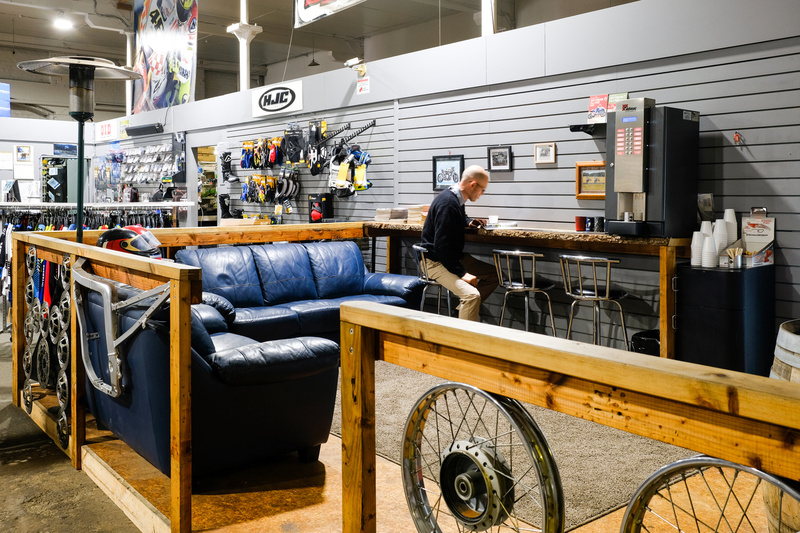A Detailed Consider Motorbike Components: What Every Motorcyclist Ought To Know
An extensive understanding of motorbike components is not just useful however crucial for any kind of biker intending to take full advantage of efficiency and safety and security. Each part, from the engine's elaborate functions to the dependability of brake systems, plays an essential duty in the total experience and functionality of the bike.
Comprehending the Engine
The engine, commonly considered the heart of a motorcycle, is an intricate assembly of components that work in harmony to transform gas right into activity. At its core, the engine's key feature entails the burning process, where air and fuel mix and ignite within the cyndrical tubes, causing regulated explosions that drive the pistons. These pistons go up and down, converting chemical energy into mechanical energy, which subsequently turns the crankshaft, inevitably powering the bike.

Understanding the intricacies of a motorbike engine is important for fanatics and bikers alike. It not just offers understanding into how motorbikes achieve their remarkable power and speed yet also help in effective maintenance and troubleshooting, making certain durability and reliability on the roadway.
Suspension Equipments
While the engine powers the motorbike, the shock absorber plays a crucial duty in guaranteeing a smooth and regulated adventure. The suspension system is in charge of absorbing shocks from the road surface, maintaining tire get in touch with, and supplying security during cornering and stopping. It comprises two major parts: the front forks and the rear shock absorbers.
Front forks are normally telescopic, including a springtime and wetting device. The springtime prolongs and presses to absorb bumps, while the dampening mechanism manages the motion to stop excessive bouncing. This combination makes certain the front wheel continues to be in contact with the road, supplying premium handling and convenience.
The back suspension, usually a monoshock or twin-shock arrangement, functions in a similar way to the front suspension yet is customized to sustain the motorcycle's weight and biker - mx parts nz. It handles rear wheel movement, contributing to the bike's total equilibrium and responsiveness
Shock absorber can be adjustable, allowing bikers to make improvements preload, compression, and rebound setups according to individual preferences and riding conditions. This adjustability enhances efficiency by optimizing the motorbike's communication with varied terrains. In summary, a reliable shock absorber is critical for biker comfort, safety, and the motorbike's taking care of prowess.
Brake Elements
Quiting power is a basic facet of bike security, and it rests on the effectiveness of the brake elements. The key components of a motorcycle's stopping system include the brake pads, calipers, rotors, and master cylinder. mx parts nz. Each of these elements plays an essential duty in ensuring effective stopping performance
Brake pads are important as they create the needed rubbing versus the blades to reduce or stop the motorcycle. Created from products such as sintered steel or natural compounds, the choice of brake pad material considerably influences performance and durability. Calipers, housing the brake pads, use pressure to the pads when the brake lever is involved, assisting in contact with the rotors.
The rotors, generally made from stainless steel or cast iron, are installed to the wheels and serve as the surface versus which the brake pads press. Their layout, including diameter and thickness, influences warmth dissipation and stopping power. The master cylinder, linked to the brake bar, produces hydraulic pressure sent via brake lines to the calipers, ensuring regular braking pressure.
Routine upkeep and evaluation of these parts are vital for ideal performance, protecting against wear and making sure motorcyclist safety and security when driving.
Tire Fundamentals
Beyond preserving robust stopping systems, making certain optimal tire performance is equally significant for motorcycle security and efficiency. Tires are the single contact factor in between the roadway and the motorcycle, making their condition essential in managing, stability, and general adventure top quality. Selecting the proper tire kind is vital, as it directly affects grip and performance. Options vary from visiting to sport tires, each developed to accommodate certain riding styles and conditions.

Check the sidewall for the DOT (Department of Transportation) code to determine the tire's age. Spending interest in these tire fundamentals not only enhances performance yet also considerably enhances riding safety.
Electrical Equipments
In the realm of motorcycle maintenance, the electric system plays an essential role in guaranteeing reputable performance and rider security. This intricate network includes essential parts such as the battery, alternator, starter motor, and wiring harness. Each element is essential for the smooth procedure of the motorbike, from ignition to illumination and communication with numerous sensing units.
The battery acts as the heart of the electrical system, supplying the essential power to begin the engine and operate devices. Frequently inspecting the battery's voltage and terminals for corrosion is crucial to stop unanticipated failures. The alternator, on the various other hand, charges the battery while the engine is running, guaranteeing a continual power supply.
To maintain it, riders ought to pay focus to any kind of uncommon sounds or difficulties during startup. Making certain that the cords are undamaged and free from damages is necessary for avoiding brief circuits and ensuring performance.
Final Thought

Stopping power is a fundamental aspect of bike safety, and it pivots on the efficiency of the brake components. The key components of a motorcycle's braking system include the brake pads, calipers, blades, and master cylinder.Brake pads are essential as they produce the required rubbing against the blades to slow down or stop the motorcycle.Beyond maintaining robust stopping systems, hop over to here making certain optimum tire efficiency is similarly significant for bike safety and security and performance.In the realm of bike upkeep, the electric system plays an essential duty in making sure reliable performance and cyclist security.